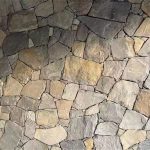Introduction
In the world of interior design and architecture, the quest for unique and luxurious materials never ceases. One such material that has captured the attention of designers, architects, and homeowners alike is cultured onyx. With its mesmerizing beauty, exquisite patterns, and versatility, cultured onyx has become a sought-after choice for creating stunning and sophisticated spaces. In this comprehensive guide, we will delve deep into the world of cultured onyx, exploring its origins, characteristics, uses, benefits, maintenance, and much more.
Origins of Cultured Onyx
Onyx is a natural stone that has been prized for its beauty and elegance for centuries. Formed in caves as stalactites and stalagmites, onyx is a type of quartz that features striking veining and color variations. The unique patterns and hues of onyx have made it a popular choice for creating decorative elements such as jewelry, sculptures, and architectural features.
Cultured onyx, on the other hand, is a man-made alternative to natural onyx that offers several advantages in terms of cost, availability, and customization. Cultured onyx is created by mixing natural onyx dust with resins and other materials to produce slabs that mimic the beauty of natural onyx. This process allows for greater control over the color, pattern, and veining of the onyx, making it a versatile option for a wide range of applications.
Characteristics of Cultured Onyx
Cultured onyx exhibits many of the same characteristics that make natural onyx so desirable. One of the most striking features of cultured onyx is its translucency, which allows light to pass through the stone, creating a warm and inviting glow. This unique quality makes cultured onyx an ideal choice for backlit applications, such as countertops, bar tops, and wall panels, where the stone can be illuminated to stunning effect.

In addition to its translucency, cultured onyx also boasts a wide range of colors and patterns, from subtle whites and creams to bold blacks and reds. The veining and marbling of cultured onyx can be customized to suit the preferences of the designer or homeowner, allowing for endless possibilities in terms of design and style.
Uses of Cultured Onyx
The versatility of cultured onyx makes it a popular choice for a variety of applications in both residential and commercial settings. One of the most common uses of cultured onyx is in countertops and bar tops, where its unique beauty and durability can enhance the overall look and feel of a space. Cultured onyx countertops can create a sense of luxury and sophistication in kitchens, bathrooms, and wet bars, making them a popular choice among homeowners and designers alike.
Cultured onyx is also used in wall panels, flooring, and decorative elements such as fireplace surrounds, columns, and feature walls. The translucent quality of cultured onyx allows it to be backlit, creating a stunning visual effect that can transform any space into a work of art. Whether used in residential foyers, hotel lobbies, or restaurant bars, cultured onyx adds a touch of elegance and drama to any environment.
Benefits of Cultured Onyx
There are numerous benefits to choosing cultured onyx for your design projects. One of the main advantages of cultured onyx is its cost-effectiveness compared to natural onyx. Cultured onyx is typically more affordable than its natural counterpart, making it a budget-friendly option for those looking to achieve the look of onyx without breaking the bank.
In addition to its affordability, cultured onyx is also more readily available than natural onyx, which can be difficult to source in large quantities. Cultured onyx is manufactured in slabs of various sizes, allowing for greater flexibility in design and installation. This ease of availability makes cultured onyx a practical choice for projects of all sizes and scopes.
Another benefit of cultured onyx is its durability and low maintenance requirements. Cultured onyx is resistant to scratches, stains, and heat, making it a practical choice for high-traffic areas such as kitchens and bathrooms. Cultured onyx is also non-porous, meaning that it is less susceptible to water damage and bacterial growth than natural stone surfaces. With proper care and maintenance, cultured onyx can retain its beauty and luster for years to come.
Maintenance of Cultured Onyx
To ensure the longevity and beauty of your cultured onyx surfaces, it is important to follow some simple maintenance guidelines. Cultured onyx should be cleaned regularly with a mild soap and water solution to remove dirt, grime, and spills. Avoid using harsh chemicals or abrasive cleaners, as these can damage the surface of the onyx.
For tougher stains or spills, a mixture of baking soda and water can be used to gently scrub the affected area. Avoid placing Personalized stepping stones for custom touch or pans directly on the surface of cultured onyx, as this can cause thermal shock and lead to cracking or discoloration. Use trivets or hot pads to protect the surface of the onyx from heat damage.
To maintain the translucency and beauty of cultured onyx, consider installing backlighting behind the stone to create a warm and inviting glow. LED strip lights or panels can be used to illuminate the onyx from behind, creating a stunning visual effect that will enhance the overall ambiance of the space.
In conclusion, cultured onyx is a versatile and luxurious material that offers endless possibilities for creating stunning and sophisticated spaces. With its unique beauty, durability, and ease of maintenance, cultured onyx is a practical choice for a wide range of applications in both residential and commercial settings. Whether used in countertops, wall panels, or decorative elements, cultured onyx adds a touch of elegance and drama to any environment. Consider incorporating cultured onyx into your next design project to elevate the aesthetic appeal of your space and create a truly unique and unforgettable experience.
